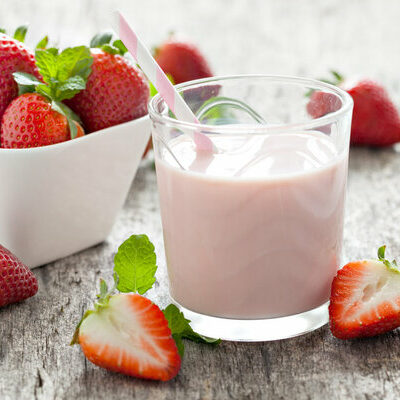
Strawberry Milk
What is Strawberry Milk?
Strawberry milk is a beverage made from milk flavored with strawberries. Dairy milk may be substituted with other types of milk such as milks made from almond, soy, or even coconut. The drink has a light pink color and is refreshing and light with a creamy texture and a strong taste of strawberries.
- Also, there is a popular South Korean version of this drink with fresh strawberries made into a syrup, combined with milk, and served chilled.
- It is a favorite in Korean cafés, where it is freshly prepared.
Some well-known strawberry milk brands include:
- Meadow Fresh
- Cimory
- Origina Dairy
- Nippy’s
- Goodday
- Dutch Lady
- Marigold
- F&N Magnolia
- Nestle
- Binggrae
Origin of strawberry milk
The exact origin of this milk is unclear, however it is believed that the first incarnations were made by rinsing berries in milk. In the dairy world, this beverage is still a relatively new addition. While it is not as popular as chocolate milk, strawberry milk is very popular in countries like Germany and South Korea. Not to mention, that Koreans have taken this drink and made it their own by forgoing powdered recipes and opting for fresh strawberries. In recent years, the strawberry production of South Korea has gone up, which may have led to the invention of new strawberry-based dishes.
Nutrition
Nutritional profile for strawberry milk (1 cup):

Strawberry milk is rich in micronutrients such as calcium, phosphorus, and potassium. Also, it contains magnesium, sodium, choline, vitamin A, retinol, and carotene in decent quantities.
Strawberries can protect the heart, increase HDL cholesterol, lower blood pressure, and guard against cancer. They have high levels of antioxidants and a number of bioactive compounds such as flavonoids, anthocyanins and phenolic acids. Also, milk is a good source of protein and calcium, as well as a host of micronutrients, including phosphorus, magnesium, sodium, potassium, and sulfur. Consumption of milk might reduce childhood obesity, and instances of type 2 diabetes. Additionally, it helps in reducing the risk of cardiovascular diseases, strokes, osteoporosis, and some types of cancers.
However, some argue that strawberry milk is unhealthy and should not be marketed to children or offered in school lunches. While it may incentivize children to consume dairy products, many flavored milks are high in calories, plus contain high amounts of sugar and food additives.
Commercial production
Strawberry milk can be purchased in powder or syrup form, which both require the addition of milk. The commercial production of strawberry milk is accomplished through freeze drying milk from dairy farms and combining it with dried strawberries or strawberry flavoring. Nonetheless, this beverage is not produced on the same scale as regular cow’s milk or even chocolate milk.
Strawberry milk recipes
This fruit milk can be made to suit different palates. Here are a few recipes to try:
- Korean Strawberry Milk
- Strawberry Milk
- Strawberry Milkshake
- Strawberry Gulkand Milkshake
- Strawberry Oreo Milkshake
- Strawberry Whipped Milk
FDA regulations
Milk is defined as the lacteal secretion from cows that is free of colostrum and contains at least 8 ¼ percent milk solids not fat and 3 ¼ percent milkfat. The FDA describes all fresh fruits, including strawberries, as raw agricultural commodities and strictly regulates all aspects of its growing, harvesting, packing, and storage. Currently, there is no standard of identity for strawberry milk.
References
Vern Grubinger, Vegetable and Berry Specialist, History of the Strawberry, The University of Vermont, https://www.uvm.edu/vtvegandberry/factsheets/strawberryhistory.html
Giampieri, Francesca et al. “Strawberry as a health promoter: an evidence based review.” Food & function vol. 6,5 (2015): 1386-98. doi:10.1039/c5fo00147a, https://pubmed.ncbi.nlm.nih.gov/25803191/
